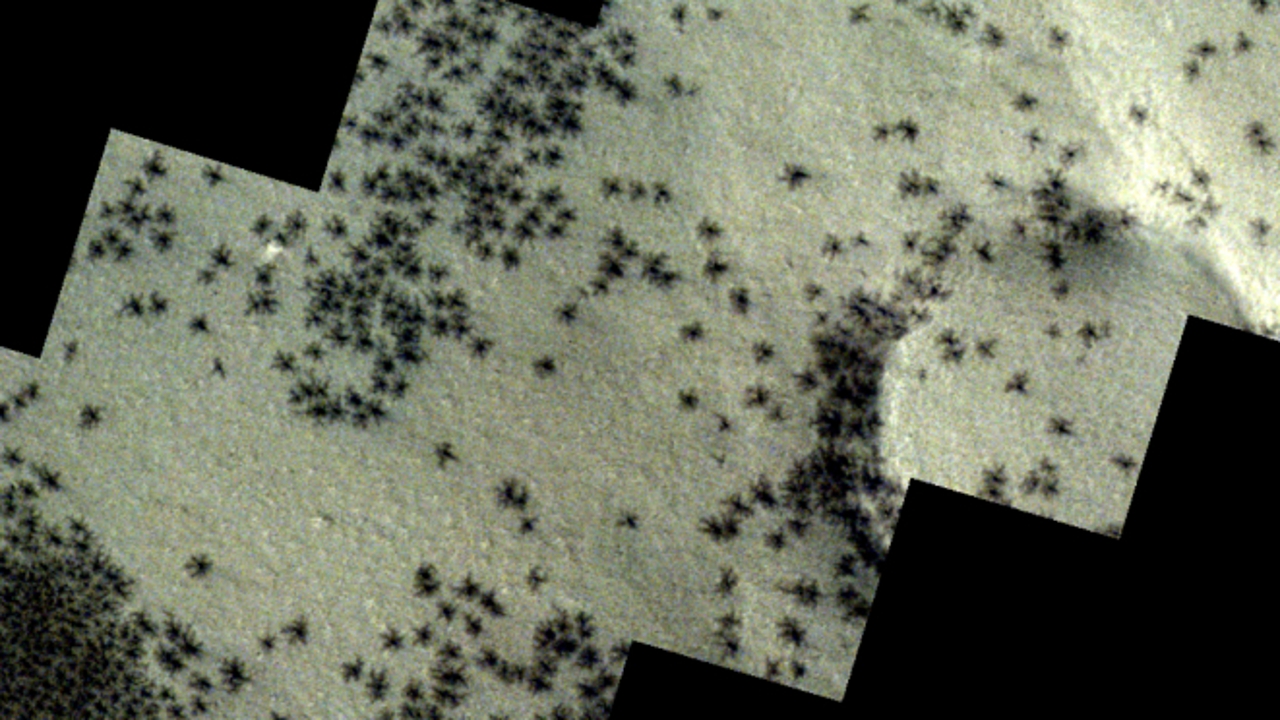What “spiders” did the European Space Agency photograph on Mars?

Space exploration using telescopes, probes, rovers and other ground-based devices often provides images capable of capturing someone’s imagination, sometimes in a slightly deceptive way. Here’s what happened this week with an image posted European Space AgencyESA is an English abbreviation for the surface of Mars, depicting what it looks like there are a lot of spiders on it. Martian spiders? The explanation is much more prosaic: a simple case of pareidolia.
Photo taken by the probe ExoMars TGO in the south polar region of Mars shows a series natural geological formations which occur with the arrival of spring in this part of the Red Planet and which can be confused with the silhouettes of many arthropods.
As ESA explained, this phenomenon occurs “when the spring sun hits layers of carbon dioxide deposited during the dark winter months.” Sunlight causes the carbon dioxide ice at the bottom of the layer to turn into gas., which subsequently accumulates and destroys the overlying ice sheets. Gas released by the Martian spring, pulling dark material to the surface and breaking through layers of ice up to a meter thick.”
This gas forms geysers and then falls out again and settles on the surface of Mars. creates dark spots 45 meters to a kilometer wide. As a result of this process these spider-like patterns appear which can be seen along the hills and plateaus of Mars.
ESA’s ExoMars TGO probe, abbreviated as Trace Gas Orbiter, orbits Mars from 2016 and is part of the ExoMars program, which 2028 plans to transport the first European all-terrain vehicle, Rosalind Franklin, to this planet. The published image was taken while flying over the site, nicknamed “Inca City‘from Mars. This is a geological formation that in another case of pareidolia resembles the ruins of an ancient city.
Pareidolia is a process in which the brain perceives certain familiar patterns or shapes, such as faces or objects, in random stimuli. For example, when certain shapes are identified in clouds.
In the so-called Inca City, the “walls” are part of the perimeter of a Martian crater, and their formation could be the result of fossilization of sand dunes or be the result of magma or sand seeping through the surfaceAs explained by ESA. But when viewed from orbit, this is what it looks like.